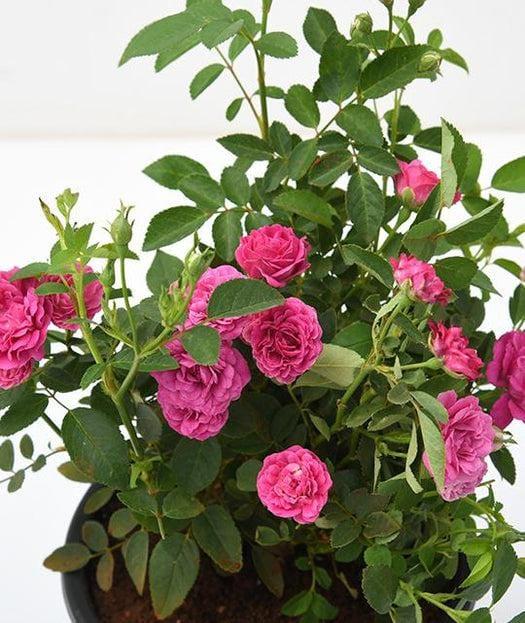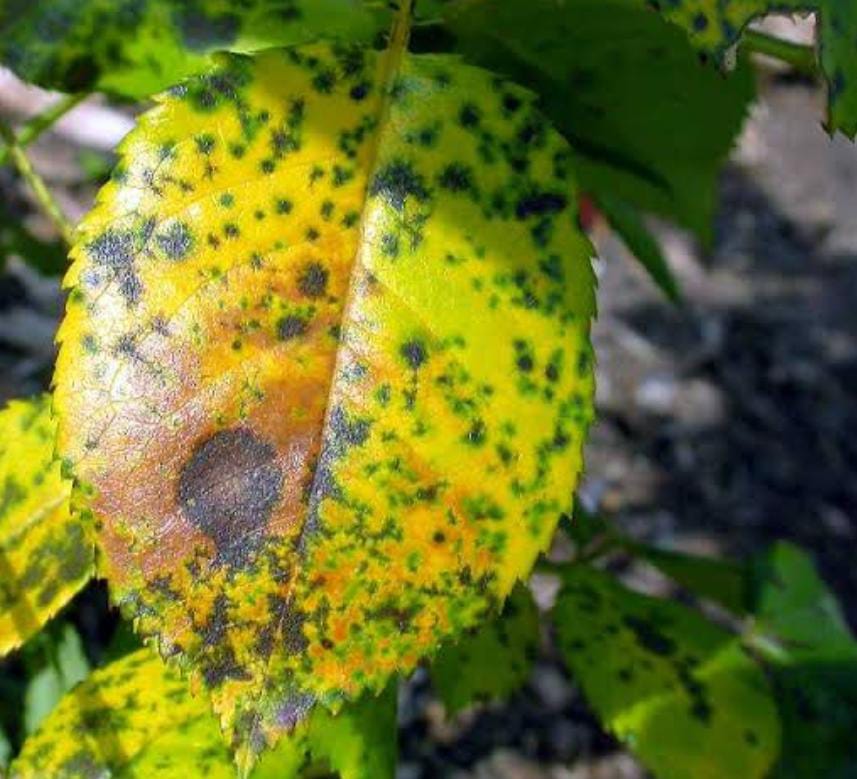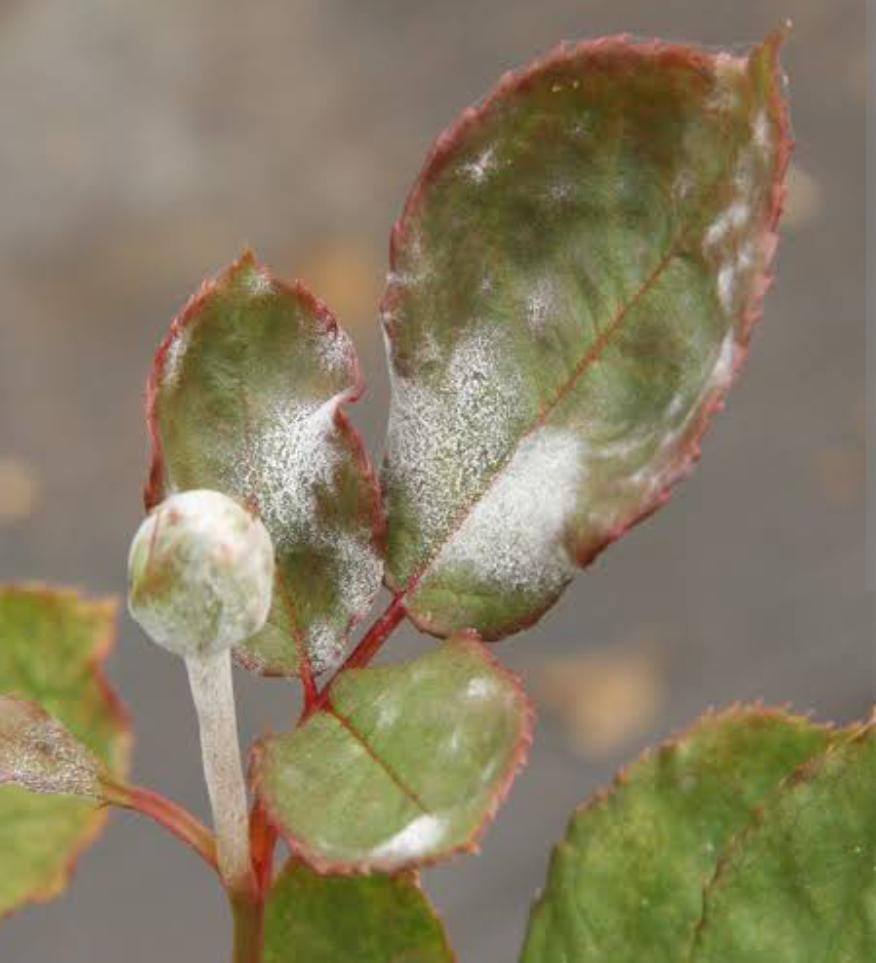Button Rose Plant
Button Roses, or Miniature Roses, thrive in well-draining soil and full sun exposure. Water consistently, and ensure good air circulation around the plants. Pruning helps maintain a compact shape and promotes continuous flowering.

Habit
Shrub
Height
10-30cm
Growth
Moderate
Soil
Sandy loam
Shade
Full Sun
Moisture
Moist
Edible
Yes [Flowers]
Medicinal
No
Origin
South America
Climatic Condition
Warm, tropical
Temperature (°)
20-35°C
Humidity (%)
40-70%
Potting media
Organic compost
Fertilizers
5:10:10 NPK
Watering
Moderate
Plant Weight
100-300g
Flowering Time
Year-round
Soil Ph level
5.5-7.0
Water Ph level
6.0-7.5
Soil EC
Low
Yield Per Plant
125.38 grams of flower yield per year
NPK ratio
5:10:10
life Span
Annual
Health Benefits
Low maintenance, drought tolerant
Suggested Grow Media or Potting Mix ?
50% loamy soil, 30% compost, 20% sand
Suggested Fertigation/Fertilizers
Fertilize every 6 weeks with a balanced, slow-release fertilizer.
Common Diseases and Remedies
Black spot , Powdery mildew
Circular dark brown sunken spot on leaves
spray bicarbonates
HEALTH BENEFITS
Medicinal Properties
1. Anti-inflammatory: Button Rose contains compounds that have anti-inflammatory properties, which may help reduce swelling and pain.
2. Antimicrobial: The plant has been shown to exhibit antimicrobial activity, which can help prevent the growth of bacteria, fungi, and other microorganisms.
3. Antioxidant: Button Rose contains antioxidants that can help protect cells from damage caused by free radicals.
Traditional Medicine
1. Digestive issues: In traditional medicine, Button Rose has been used to treat digestive issues such as constipation, diarrhea, and stomach ulcers.
2. Respiratory problems: The plant has been used to treat respiratory problems such as bronchitis, asthma, and coughs.
3. Skin conditions: Button Rose has been used to treat skin conditions such as eczema, acne, and dermatitis.
What Is An Button rose ?
Button rose is a type of flowering shrub plant in the Rosaceae family. Roses are one of the most commonly cultivated flowering plants and are primarily native to Asia. Rose flowers are very fragrant on their own, unless the species has evolved to produce large, colourful flowers for commercial cultivation.

What Are The Different Types Of Button Rose Plants?
1. Arka Savi
Rose spray category belonging to the Floribunda group. flowers are small to medium sized and fall under the category of button rose in the market. The flowers range in colour from purple to pink and bloom in clusters of flowers. 'Alka Savi' is identified and due to its flowering properties and high yield. Flowers are cut at flower stalks and the expected potential yield of loose flowers is 30 tons/acre/year. In addition to high yields, it also has the advantage of a long shelf life of 5 to 6 days.
2. Arka Parimala:
fragrant variety with red colour. is suitable for outdoor cultivation for a wide range of purposes, from rose flowers to cut flowers. Cut flowers with stem lengths of 30-40 cm can be used in floral decorations and add value to arrangements with their fragrance. Cut flowers or roses can be kept in a vase or kept for 2 to 3 days. It is rich in antioxidants and could potentially be used as a food colouring or flavouring agent. The petals of this variety can be used to prepare rose tea and gulkand.
3. Arca Scania
It has red-purple flowers, so it is for display in the garden. The flowers are fragrant and have a concrete yield of of 0.224% based on the fresh weight of flowers of Being a fragrant variety , it may be used in all rose flavoured products. The flowers are larger than and the yield is 6 million.

How to Care Button Rose ?
1. Location
Botanical roses grow best in sunny locations. Moderate watering is required. The soil should be sandy and well-drained.
2. Sunshine
Places with daytime temperatures of 25°C to 30°C and night temperatures of 15°C 10C are suitable for rose production.
3. Soil
Deep clay soil (up to 50 cm) rich in organic matter and with a pH of 5.5 to 6.5 is ideal for growing roses. The growing medium can consist of soil, sand, and FYM in a 2:1:1 ratio.
4. Hydration
Drip irrigation at 4-6 l/m2 is best. However, this may vary depending on temperature, relative humidity, and lighting conditions.

5. Nourishment
Organic fertilizer is added to the soil at a rate of 15 kg/m2 and mixed during bed preparation. Fertilizer dosage is 400:320:600 kg NPK/ha/year with 2 kg superphosphate, 1 kg ammonium calcium nitrate and 1/2 kg potassium muria per 10 m² before planting. Basic spraying is recommended. The remaining N and K is provided by biweekly fertilization of 1.92 g N/m2 with water-soluble fertilizers and 2.88 g/m2 K2O /fertilization. 2 g/L micronutrient formulations or individual nutrients are applied by foliar spray or fertilization. Regular analysis of soil, water, and foliage is a good guide.
6. Issues
Roses are susceptible to a number of diseases and pests, the most common of which are black rose spot, Cercospora leaf spot, aphids and sawflies. Monitor your rose plants throughout the growing season by inspecting the leaves, buds, and stems for symptoms such as spots, dark spots, sticky residue, holes in the leaves, and yellowing or warping of the leaves.
What are the Benefits of Button Rose ?
The medicinal properties of roses include treating inflammation, diabetes, dysmenorrhea, depression, stress, seizures, and aging. Rose water is a valuable beauty water for skin care and has antibacterial effects against various microflora.

FAQs About Growing Button Rose
1. What is button rose used for ?
Button rose flowers are edible and can be used to add colour and flavour to salads, desserts, and drinks. Button rose leaves also have medicinal properties and can be used to treat minor skin irritations and wounds.
2. What are the 10 uses of rose petals ?
Rose is mainly used for commercial and medical purposes. Due to its anti-inflammatory, aphrodisiac, antidepressant, astringent, antispasmodic, cleansing, antibacterial, and antiseptic properties, it can treat skin diseases, eye strain, stress, insomnia, diarrhea, hyperacidity, etc.
3. Can we eat button roses ?
Rosehips are the fleshy, sometimes edible, berry-like "fruits" (flower cups) that grow on rose plants.
4. Is button rose seasonal ?
The button rose or dwarf rose is a perennial flowering plant. Blooms all year round.
5. Can I drink rose water ?
Drinking rose water can also help improve your physical and mental health in many ways. Rosewater contains vitamins A, C, E, and B, all of which can help reduce stress and anxiety. Research shows that rose water can reduce bloating, fluid retention, constipation, and improve digestion.



